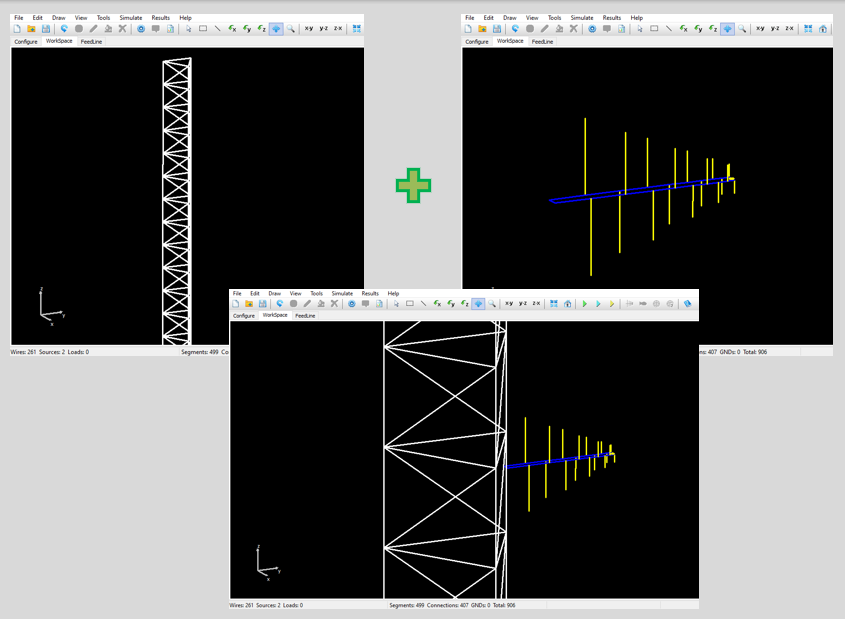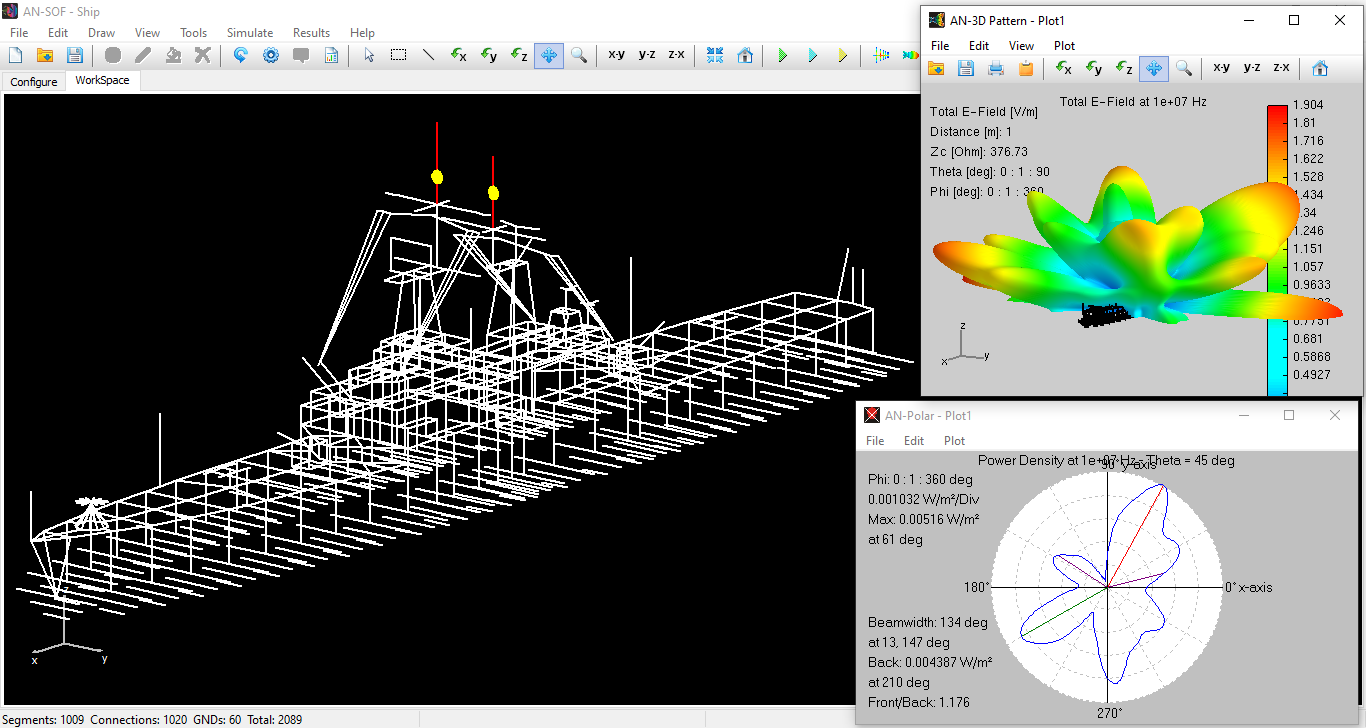Search for answers or browse our Knowledge Base.
Guides | Models | Validation | Blog
Enhancing Antenna Design: Project Merging in AN-SOF
Discover how AN-SOF’s project merging feature enhances antenna design flexibility, unlocking new possibilities.
Key Takeaways
- AN-SOF’s project merging feature combines wire structures from different projects for comprehensive antenna system analysis.
- Importing wires streamlines simulating combined structures’ electromagnetic response.
- Project merging enhances efficiency in antenna design, evaluating individual components and interactions within a single project.
Wires can be imported into AN-SOF from another AN-SOF project, allowing wire structures from different projects to be merged into a single project.
When a project is saved, a file with the extension .wre is also saved, containing the geometrical description of the wires. To import wires into a project, navigate to the File menu > Import Wires > AN-SOF Format, and select the .wre file you want to import.
This feature enables the analysis of the electromagnetic response of an antenna and its supporting structure separately, then combines them in a new project to analyze the response of the entire structure. For example, you can model a directional antenna like a Yagi-Uda or a log-periodic dipole array (LPDA) and analyze its performance in terms of antenna gain and bandwidth. This model can be saved in an individual project with the results.
In another project, you may have a broadcast tower, and you want to install the directional antenna (Yagi or LPDA) using the tower as its supporting structure. In this case, you can import the tower geometry into the directional antenna project and run a simulation to evaluate the changes in antenna gain and bandwidth due to the electromagnetic interaction with the tower. Figure 1 illustrates a tower and an LPDA in separate projects within the AN-SOF workspace, as well as both together in the combined project.

It’s important to note that electromagnetic responses, both near and far fields, don’t always sum up due to mutual interactions between the elements of each structure. Therefore, the calculation must be rerun for the combined structure.
An illustrative example can be found in our knowledge base: two 10 MHz dipole antennas mounted on a ship, as shown in Fig. 2. The ship model is stored separately, with seawater modeled as a PEC ground plane in AN-SOF due to its high conductivity at 10 MHz. The ship’s structure is grounded to simulate contact with water. You can download the ship model file in AN-SOF format (.wre) by clicking the button below Fig. 2.

When importing a structure into another project, it is often necessary to rescale it, move it to a different position, or rotate it around a specified axis. These operations can be easily performed using the Scale, Move, and Rotate functions available in the Edit menu.
With AN-SOF’s importation feature, merging multiple projects is possible, making it a valuable tool for leveraging previously drawn structures.
